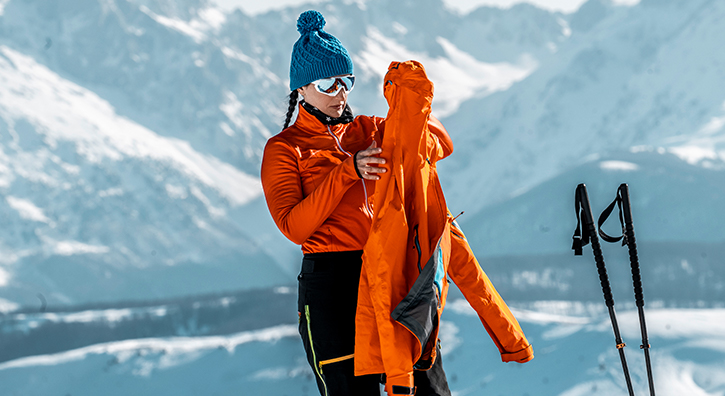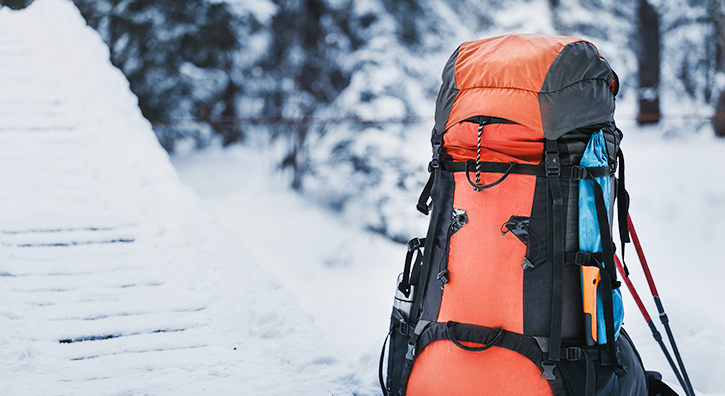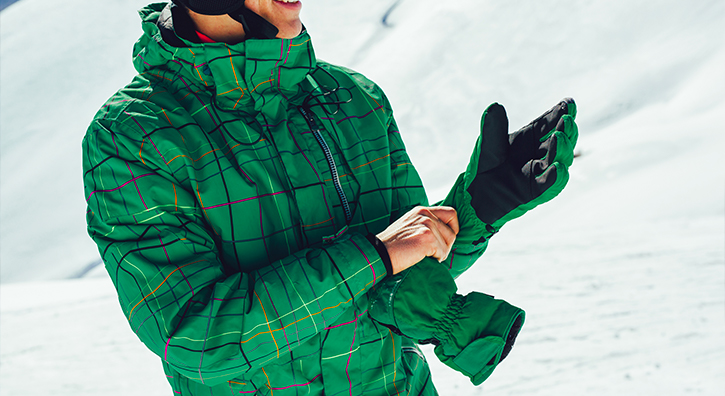0800 260 5082
Available from Monday to Friday from 9am to 7pm, and Saturday from 10am to 7pm. Closed on Sunday.
Available from Monday to Friday from 9am to 7pm, and Saturday from 10am to 7pm. Closed on Sunday.
Understanding how to choose the right ski clothing for men is essential to fully enjoy your time on the slopes. Whether you're carving down red runs or enjoying your first lessons on the beginner trails, being properly dressed ensures comfort, safety, and performance in cold and changing mountain conditions. From layering systems to the technical features of jackets and trousers, every piece of clothing plays a key role in how well you ski — and how much you enjoy it.
No matter if you're investing in new gear or renting part of your outfit, choosing the right ski clothes is about more than just style. It’s about staying dry, warm, and mobile, even in snowstorms or sub-zero temperatures. A well-fitted jacket will shield you from the wind, while high-quality thermal layers will help regulate your body temperature. Equally important are accessories like gloves, neck warmers, ski socks, and base layers — often underestimated but absolutely essential for a long day in the snow.
Before heading out to the mountains, it’s worth taking the time to build your ideal ski outfit, tailored to your experience level and destination. Whether you’re skiing in the French Alps or elsewhere in Europe, preparing your clothing in advance means less stress and more focus on what matters most: enjoying your ski adventure in total confidence.

Skiing isn’t just about technique — it’s also about preparation. Wearing the right ski clothing plays a major role in both safety and enjoyment during your time on the slopes. Unlike casual winter wear, technical ski clothing is specially designed to handle extreme conditions: low temperatures, snow, wind, and moisture. For men, choosing the proper outfit means looking for performance-oriented features such as waterproof membranes, breathability ratings, and thermal insulation. These features help maintain body heat while allowing sweat to evaporate — a critical balance when engaging in high-intensity sports like skiing. Good clothing also minimizes the risk of hypothermia and improves focus, allowing you to enjoy the mountains for longer.
A key rule in mountain clothing is the three-layer system, which provides protection, insulation, and moisture control. The base layer (worn directly on the skin) should be made from moisture-wicking materials like merino wool or technical synthetics — never cotton, which traps sweat and cold. The mid-layer is the insulator: a fleece, light down jacket, or technical sweater that traps heat without being bulky. Finally, the outer layer — your ski jacket and trousers — acts as a shield against wind, snow, and rain. Men’s ski jackets often include features such as snow skirts, ventilation zips, and adjustable hoods, while ski trousers should offer waterproofing, breathability, and freedom of movement. Combining these layers gives skiers the flexibility to adapt to changing weather throughout the day.

While jackets and pants are the foundation of your outfit, accessories are just as essential for a successful ski day. A good pair of waterproof gloves or mittens will keep your fingers warm and functional even in freezing temperatures. Ski socks — ideally made of wool or performance blends — provide warmth while reducing friction and moisture. Goggles protect your eyes from the wind and snow, but more importantly, from UV rays that are intensified at altitude and reflected off the snow. They also enhance visibility in flat light or heavy snowfall. Don’t forget a helmet-compatible beanie, a neck warmer, and thermal underwear. These small additions can make the difference between an uncomfortable session and a smooth, enjoyable run.

Before buying or renting ski clothes, it's essential to evaluate your experience level and skiing style. Beginners often need warmer, more insulated clothing since they spend more time stationary or moving slowly. In contrast, advanced skiers may prefer lightweight, breathable gear that provides freedom of movement and temperature regulation during intense activity. Think about how often you ski, the type of weather you typically face, and whether you prioritize comfort, performance, or a bit of both. Your choice of clothing should reflect your needs on the slopes — not just the latest trends.

When selecting a ski jacket or pants, two technical criteria are essential: waterproofing and breathability. These are usually expressed in millimetres (mm) or ratings like 10k/10k, where the first number indicates how waterproof the fabric is, and the second shows its ability to let moisture escape. A 10,000 mm waterproof rating is suitable for most recreational skiers, while pros might opt for 20k or even Gore-Tex materials. Breathability prevents overheating, especially on sunny days or when skiing off-piste. Always look for garments with sealed seams and snow skirts to prevent snow from entering your gear.
The fit of your ski clothes impacts comfort, performance, and safety. Too tight, and you lose mobility; too loose, and you risk letting in cold air or snow. Men’s ski clothing typically comes in regular, slim, or relaxed fits. Think about layering when choosing sizes: your jacket should accommodate a base and mid-layer without feeling bulky. Articulated knees, stretch panels, and ergonomic cuts in jackets and pants allow for natural movements while skiing, making turns and navigating slopes much easier. Trying on your gear in skiing position (slightly bent knees) can help you evaluate the comfort and flexibility before purchasing.
Skiing is a demanding sport that puts your clothing through rigorous conditions, from abrasive falls and constant friction against snow and ice, to prolonged exposure to moisture, wind, and intense UV rays at high altitudes. Because of this, it’s crucial to invest in durable, high-quality materials that can withstand these challenges without losing their protective qualities. Look for garments made from ripstop fabrics, which are woven to resist tearing and ripping, and check if the ski pants have reinforced panels in key areas like the knees and seat — zones most exposed to wear and tear.
Additionally, pay attention to the quality of zippers, seams, and waterproof membranes. Garments with fully taped seams prevent water from seeping through, while waterproof zippers add an extra layer of protection against snow and moisture infiltration. Many premium ski brands use advanced materials such as Gore-Tex or proprietary membranes that offer excellent waterproofing combined with breathability, ensuring you stay dry without overheating.
Durability also means better long-term value. High-quality ski clothes tend to come with warranties and often include repair services, reflecting the brand’s confidence in their product’s longevity. Although investing in top-tier gear might seem costly at first, it pays off by reducing the need for frequent replacements and providing consistent comfort and protection season after season. Moreover, durable materials help maintain the garment’s fit and insulation properties, ensuring you remain warm and mobile on the slopes.
Finally, high-quality ski clothing not only performs better but often incorporates thoughtful design details that improve your overall skiing experience — from adjustable cuffs and ventilation zips to reinforced pockets and removable hoods. Choosing durable, well-constructed ski clothes is essential to maximize both your safety and enjoyment during every ski adventure.

Taking good care of your ski clothes starts with proper cleaning after each use. Always follow the manufacturer’s washing instructions, usually found on the label. Most ski jackets and pants require gentle washing in cold water with a specialized detergent designed for waterproof fabrics — avoid regular detergents and fabric softeners as they can damage the waterproof membranes and breathability. After washing, let your garments air dry completely, and never use a high-heat tumble dryer, which can deteriorate technical fabrics. For long-term storage, make sure your clothes are fully dry and store them in a cool, dry place away from direct sunlight to prevent fading and material degradation.
Over time, the waterproof coating on ski clothes can wear off, reducing their effectiveness. To keep your gear performing at its best, it’s important to reapply a waterproofing treatment regularly — especially on high-wear areas like sleeves, shoulders, and knees. There are several spray-on or wash-in waterproofing products available on the market designed specifically for ski and outdoor apparel. Restoring the DWR (Durable Water Repellent) finish not only keeps water out but also maintains breathability, helping you stay dry and comfortable on the slopes. Testing your clothes after treatment by sprinkling water on the surface is an easy way to check if the water beads up — if it doesn’t, it’s time for another treatment.

Accidents happen, and even the best ski clothes can get small tears, holes, or broken zippers. Instead of ignoring minor damage, address repairs as soon as possible to prevent the problem from worsening. Many brands offer repair services, but simple fixes like patching tears with adhesive repair kits or replacing zipper pulls can be done at home. Maintaining your ski clothes in good condition ensures they continue to protect you against harsh mountain conditions and last through many ski seasons. Regular inspections of your gear before and after your ski trips will help you spot any issues early and keep you well-prepared for every adventure.